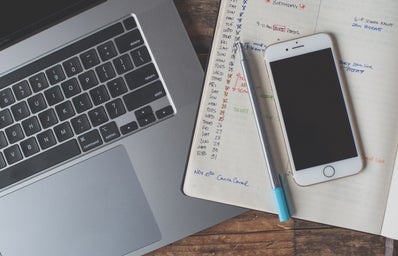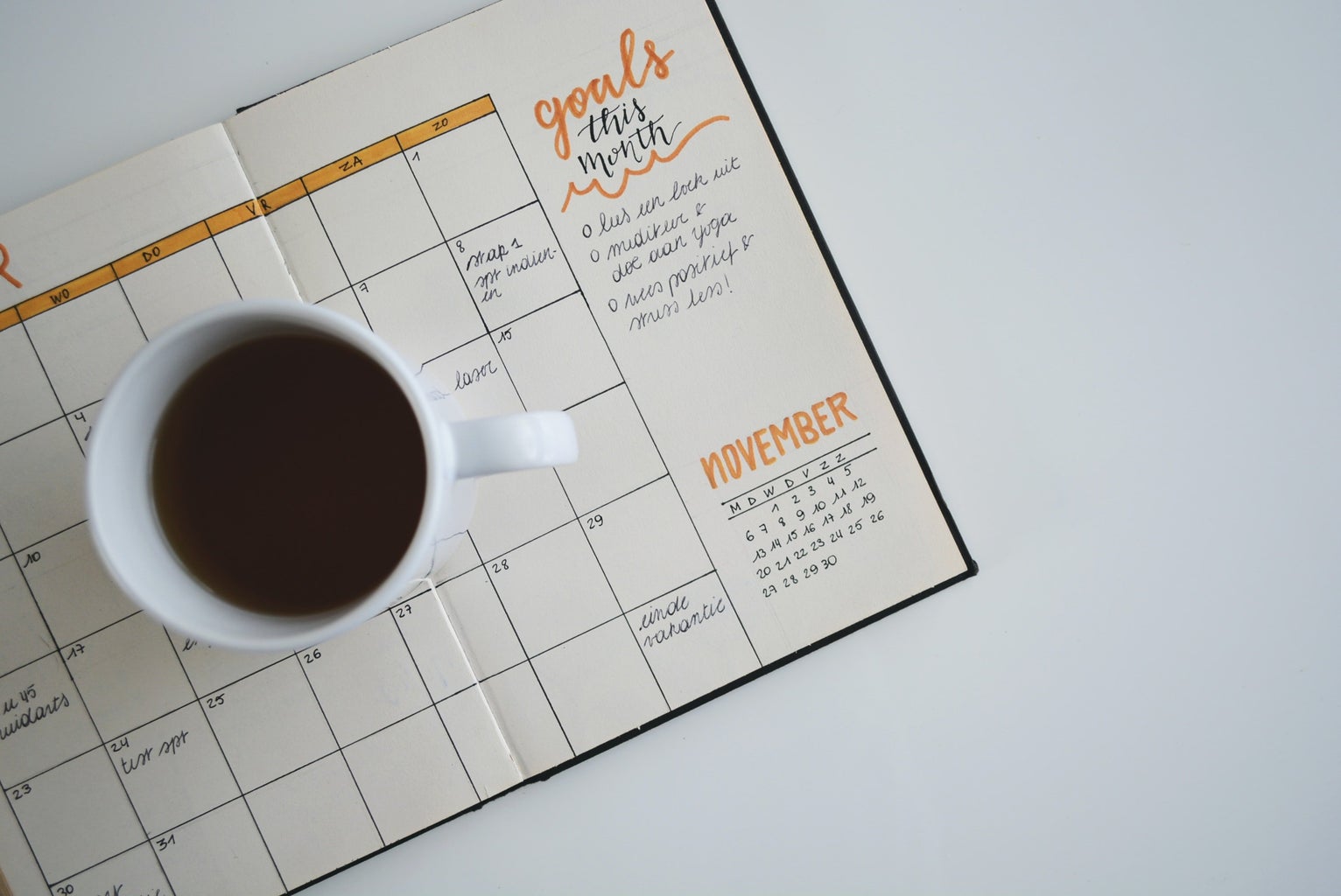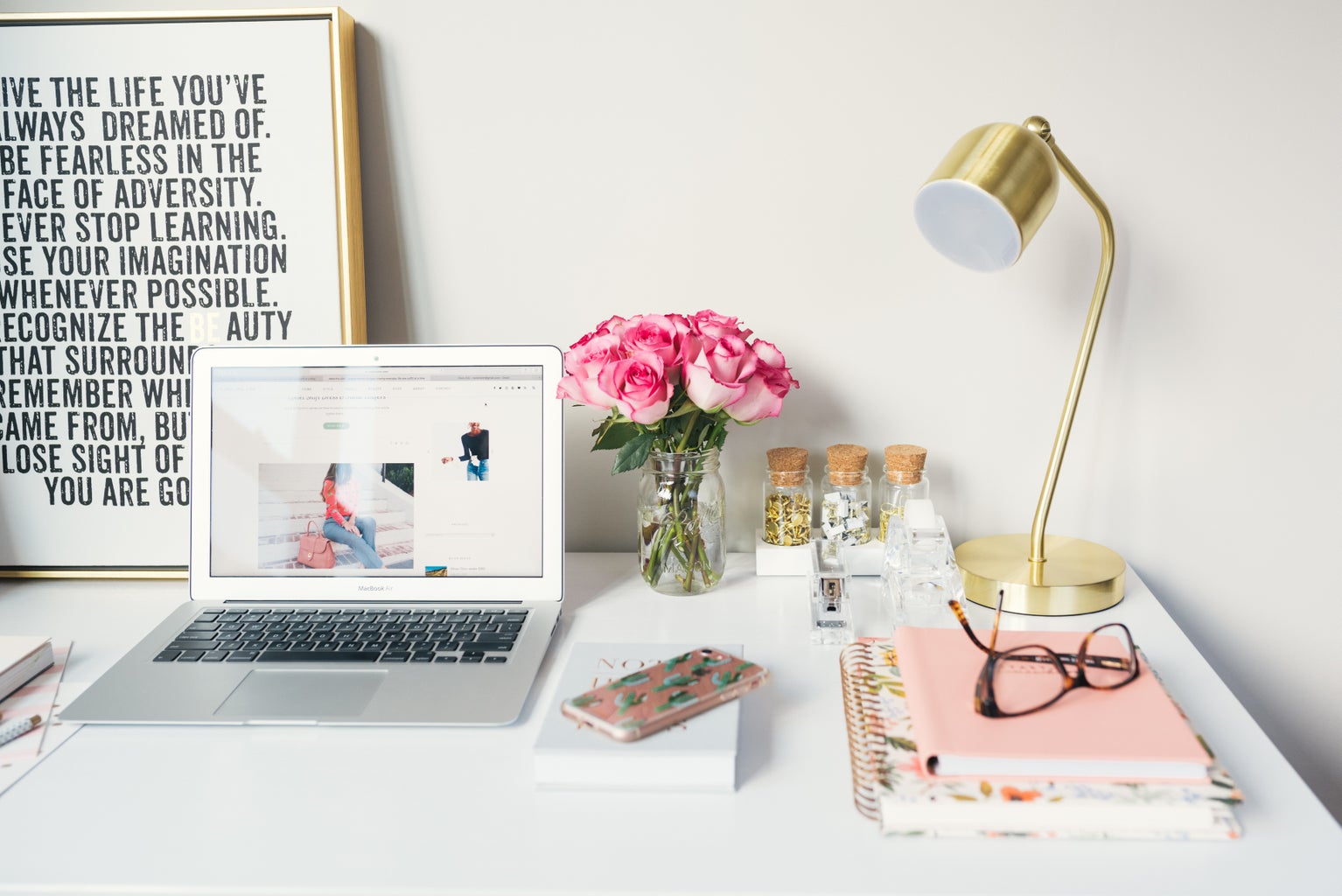Now that the semester is underway, you might be starting to feel overwhelmed. On one hand, you’ve got your classes to go to and homework to do, and on the other you’ve got clubs, socializing with friends and making time for yourself. Many days feel like they run short, and there isn’t enough time to do everything. However, there are some things you can do to help make your busy schedule more attainable. Finding organizational strategies that work for you will help you visualize your days better and make it easier to get things done on time. Here are my top three favorite ways to get organized that have helped me get my life together.
- Keep a Calendar
-
Below I have listed a few calendar style options for you to choose from. Not everyone will want to use the same style because they offer slightly different ways to view and set up your schedule. I keep three calendars at all times, which I will discuss in the first three bullet points. But whether you choose multiple options or one of them, keeping a calendar ensures that everything you need to do is organized in one space. Calendars help you visualize assignment due dates and the time that you have to do them. It also shows where you have free time, so you can comfortably schedule things you want to do. Here are five options that I have found useful.
- Agenda: I feel like most people have kept or keep an agenda. I remember in grade school we were always given one to use by our schools because it was such a common way to keep track of assignments. I like using an agenda in college because it is easy to carry around, and I can quickly pull it out in class to jot things down. Most agendas come with a monthly overview page in addition to the daily sections. These options allow you to choose how you want to visualize things as well as give you enough space to write down what you need to.
- Desk Calendar: A desk calendar is a much larger option. It usually comes in booklet form with each sheet of paper containing a blank monthly layout. Because it comes with so many pages, it lasts a long time (I’ve had the same booklet for two years), which makes it a great economical option. It is also nice because it allows you to see the big picture of what your month will look like. You can see what days are packed and what days don’t have anything. By seeing multiple days and weeks at once, you can more carefully design your schedule around your needs.
- Microsoft Calendar: There isn’t an official name for this calendar, but my professional writing professor taught us how to make one when the pandemic hit and we struggled to get back on the rails. I use this to plan out my days by the hour. It sounds a little neurotic, but by physically dividing my time I feel more confident by seeing that there is enough time to do everything I need to. To make this type of calendar follow these steps: 1.) Go into Microsoft Word and open a new document. Switch the orientation from portrait to landscape. 2.) Create a table that has six columns and 12 rows. 3.) Starting in the second box on the top row, fill in each box with Monday-Friday as well as the calendar date for the week you are focusing on. I find it helpful to color code the columns for each day so that when I am looking at the sheet as a whole it is easier to separate them from one another. 4.) In the second box on the leftmost column, start listing times in hourly blocks (ex. 7:00-8:00). The first time block should be around when you wake up in the morning and the subsequent boxes should be listed until the time you want to stop working. I stop listing times at 6:00, and my last block just says “evening work,” but feel free to add more rows to include specific times beyond 6:00.
- Calendar App: Most phones come with a calendar app already built-in where you can type in your assignments and events and receive alerts about them. You can make entries with specific dates, times or have them listed as “all-day” so they show up at the top of that daily calendar. If you don’t like the app that comes on your phone, there are tons of them on the app store. Pick whichever one entices you the most, so you will want to use it. A lot of the time, I look for bright colors and fun features that make my experience using the app unique. The more I can put my personality into the calendar, the more I want to use it because it is tailored to me. These are also a great option if you don’t want to carry around a physical agenda or need your calendar on you at all times.
- Keep a Running List: This is something that you can do daily or throughout the week. On each day, it may be helpful for you to list out all of the things you need to accomplish before the end of the day. That way, when you get something done you can cross it off, which will make you feel successful each time you finish something. You can also simply keep a running list of everything you need to do. When you hear about an event, write down the title, location, date, and time that it will take place. When you get an assignment, write down its due date. This is a great option for people who just don’t like keeping up with calendars. It ensures that you don’t forget about anything and keeps your objectives in one space.
- Color Code Everything
-
If you are a visual learner like me, then color coding is critical. I love color coding because it makes everything so much easier to see and much more entertaining to look at. By using the same color for certain items they become visually associated with one another, forming a collective group. Multiple colors will then also distinguish one group of items from another, making it easy to see the separation of those items. Color coding essentially sends strong visual cues to your brain that help organizes the information in front of you.
You can start by color coding your calendars. Whenever you add an item to whatever calendar style you choose to use, be conscious of the color you choose to write it in. For example, I use black to list all my assignments, red for exams dates and pink for social activities. That way you can further organize your calendars into seeing what type of things are taking up your time on specific days.
Color coding can also help organize your notes. As you’re taking notes, whether by hand or typing, make each section a different color. For example, all of my lecture titles are written in pink, but then the first topic is written in blue, the second in purple, the third in brown and so on, repeating the cycle whenever I get to the last color in my set of pens. This creates visual chunks of information, connecting the items within the chunk and distinguishing them from the other topics in that lecture.
Also, if you take notes in a notebook you can use bright color sticky notes and page markers to divide the sections. Come exam review time, these markers will make it easier to identify what pages have what sort of information and make them quickly accessible. Plus, they can add a little bit of personality to your notebooks. For example, I just bought smiley narwhal page markers, and they make me so happy whenever I see them in my notebook. It’s just a little way to make learning more fun.
- Keep All of Your School Materials in One Spot
-
While we’re in college, most of our bedrooms have a desk inside them. Because we have such a small space, we need to make sure that we organize it most efficiently. I like using my desk as a base area to organize my school supplies. On top, I have a container for all of my pens, Post-It Notes, tacks, erasers, etc. Beneath, I have book holders that I put all my notebooks in and stack my textbooks and novels beside them. I like having the extra organizational tools because it forces me to assign things to their own space, which ensures that I don’t always have stuff randomly placed on my desk.
There are some major mental benefits to giving your school items their own “home.” For starters, it makes things harder to lose. If all of your books and pens are always in a certain place, then you always know where they are and are less likely to misplace them. However, this only works if you commit to putting things back once you use them. Try using the 10-minute clean-up strategy at the end of the day. Right before you go to bed, or sometime after you’re done working, take 10 minutes to return everything to its place. That way things are back where you need them when you wake up in the morning and you don’t have to go searching for them.
Also, it makes it easier to pack your backpack before classes. Again, when your school area is organized, you know where everything is. This makes it easier to grab what you need quickly and decreases the likelihood that you’ll forget something. This is especially helpful for people (like me) who tend to forget things. I’ve heard about people who always put their wallets with their keys, so they literally can’t leave for work if they don’t grab both on their way out the door. This principle applies to organizing our school materials because we can put things in one space, so everything we need is together.
Most importantly though, this organizational tip helps designate an area for a school mindset that is separate from the rest of your space. It is really important to divide these physical spaces so that school does not take over your entire mindset. If your books and papers and such are cluttering multiple spaces in your room, then you physically cannot get away from it, which leads to school taking up more of your mental capacity. However, if your school items have their own space, then the rest of your room is free to function separately from them.
I hope these tips help you as much as they helped me. Getting organized takes time and consistent effort, but it is worth it. You end up saving time and energy (and your sanity) when you know you won’t forget something, when things are easy to see and when everything has its own space.





